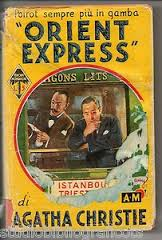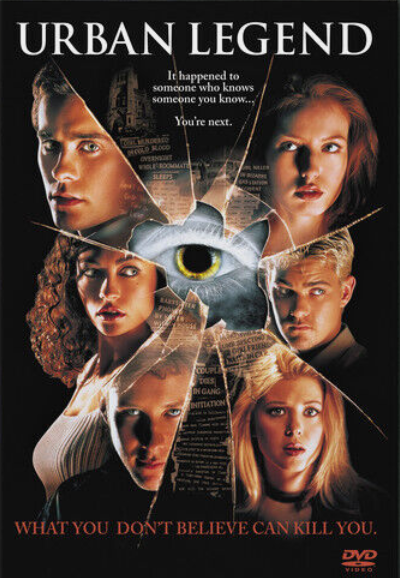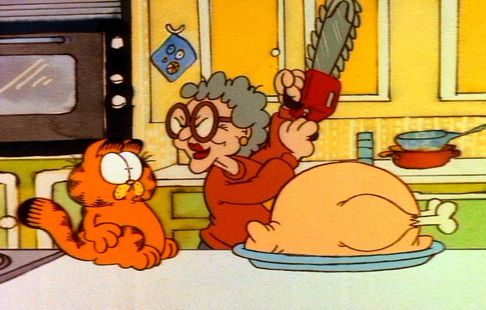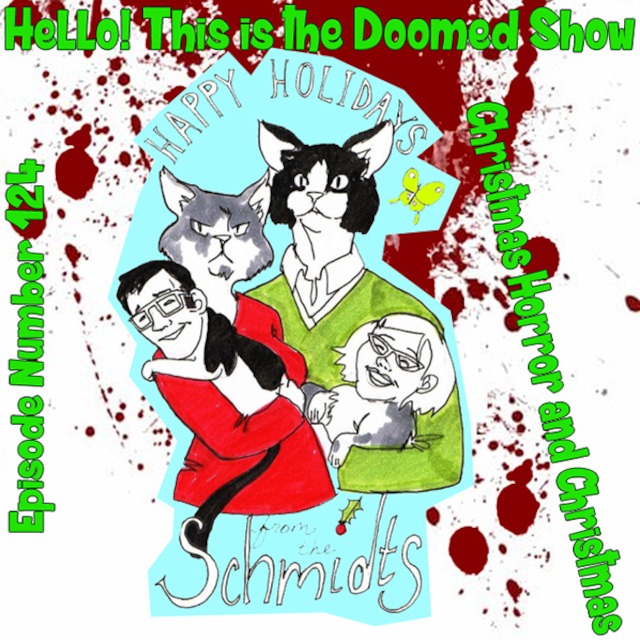Introduction
 Any discussion on the origin of the giallo, whether the discussion is concerned with the literature or the film phenomenon, will most likely begin with an explanation that the giallo took its name from the yellow book covers used by Mondadori to color code their mystery novel publications (Pieri, 2011; Koven, 2006; Needham, 2002). Eventually, giallo became a term used for any type of detective fiction, story with a mystery element, or intrigue. Mikel Koven would coin it a “metonym for the entire mystery genre (2006 p2-3).” Initially, between WWI and WWII, the stories were imported from the UK, America, and France. The foreignness helped to distance the stories of crime and murder from Italian readers while also becoming so attractive an element that Italian authors began to adopt anglicized pseudonyms to put their locally produced work on even footing with the popular imports (Pierri, 2011; Needham, 2002). Italian writers of the giallo faced another hurdle in competing with the foreign imports in the strict oversight and censorship in the Fascist regime pre WWII for their production of what was considered low brow literature. This label of ‘low brow’ followed the giallo from literature to film when the movies rose as a genre in the 60s and 70s, sometimes considered a component of a larger movement in Italian Fantasy Cinema that included horror (Palmerini & Mistretta, 1996). The giallo in film has been popularly defined by its characteristics, by time period, and by driving personalities. It has been said to be an “auteurist domain,” defined by the directorial names that made the most memorable examples of the genre; defined by Argento (Heller-Nicholas, 2012; Palmerini & Mistretts, 1996). However, similar to the debate over the rigid, proscribed, and repetitive structure of crime fiction literature giving way, through that very repetition, to a dynamic and flexible reimagining of the genre (Maher & Pezzotti, 2017), the cinematic giallo has also been described as having “an inherently ambivalent form (Koven, 2010 p144)”. Despite the giallo’s formulaic narratives and repetitious plot elements, the genre can seem even less definable in film than in literature, and may represent a cultural exchange that only adds to its fluidity and timelessness (Heller-Nicholas, 2012). As Gary Needham thoroughly points out:
Any discussion on the origin of the giallo, whether the discussion is concerned with the literature or the film phenomenon, will most likely begin with an explanation that the giallo took its name from the yellow book covers used by Mondadori to color code their mystery novel publications (Pieri, 2011; Koven, 2006; Needham, 2002). Eventually, giallo became a term used for any type of detective fiction, story with a mystery element, or intrigue. Mikel Koven would coin it a “metonym for the entire mystery genre (2006 p2-3).” Initially, between WWI and WWII, the stories were imported from the UK, America, and France. The foreignness helped to distance the stories of crime and murder from Italian readers while also becoming so attractive an element that Italian authors began to adopt anglicized pseudonyms to put their locally produced work on even footing with the popular imports (Pierri, 2011; Needham, 2002). Italian writers of the giallo faced another hurdle in competing with the foreign imports in the strict oversight and censorship in the Fascist regime pre WWII for their production of what was considered low brow literature. This label of ‘low brow’ followed the giallo from literature to film when the movies rose as a genre in the 60s and 70s, sometimes considered a component of a larger movement in Italian Fantasy Cinema that included horror (Palmerini & Mistretta, 1996). The giallo in film has been popularly defined by its characteristics, by time period, and by driving personalities. It has been said to be an “auteurist domain,” defined by the directorial names that made the most memorable examples of the genre; defined by Argento (Heller-Nicholas, 2012; Palmerini & Mistretts, 1996). However, similar to the debate over the rigid, proscribed, and repetitive structure of crime fiction literature giving way, through that very repetition, to a dynamic and flexible reimagining of the genre (Maher & Pezzotti, 2017), the cinematic giallo has also been described as having “an inherently ambivalent form (Koven, 2010 p144)”. Despite the giallo’s formulaic narratives and repetitious plot elements, the genre can seem even less definable in film than in literature, and may represent a cultural exchange that only adds to its fluidity and timelessness (Heller-Nicholas, 2012). As Gary Needham thoroughly points out:
“One interesting point about the giallo in its cinematic form is that it appears to be less fixed as a genre than its written counterpart. The term itself doesn’t indicate, as genres often do, an essence, a description or a feeling. It functions in a more peculiar and flexible manner as a conceptual category with highly movable and permeable boundaries that shift around from year to year… (2002)”
What follows is an exploration into the phenomenon of and discourse on the cinematic giallo, as it is intrinsically linked to giallo literature and to the unique historical environment in which it evolved, to determine what, if any, are the defining elements that make a film a giallo. Perhaps like it’s literature forebears, the giallo’s blending of characteristics from different genres creates “dynamic conceptual structures” that cannot be defined without allowing for blurred boundaries (Maher & Pezzotti, 2017 p9).Continue reading Perception, Gender, Identity, and Otherness: Un-Defining the Giallo Film



 Any discussion on the origin of the giallo, whether the discussion is concerned with the literature or the film phenomenon, will most likely begin with an explanation that the giallo took its name from the yellow book covers used by Mondadori to color code their mystery novel publications (Pieri, 2011; Koven, 2006; Needham, 2002). Eventually, giallo became a term used for any type of detective fiction, story with a mystery element, or intrigue. Mikel Koven would coin it a “metonym for the entire mystery genre (2006 p2-3).” Initially, between WWI and WWII, the stories were imported from the UK, America, and France. The foreignness helped to distance the stories of crime and murder from Italian readers while also becoming so attractive an element that Italian authors began to adopt anglicized pseudonyms to put their locally produced work on even footing with the popular imports (Pierri, 2011; Needham, 2002). Italian writers of the giallo faced another hurdle in competing with the foreign imports in the strict oversight and censorship in the Fascist regime pre WWII for their production of what was considered low brow literature. This label of ‘low brow’ followed the giallo from literature to film when the movies rose as a genre in the 60s and 70s, sometimes considered a component of a larger movement in Italian Fantasy Cinema that included horror (Palmerini & Mistretta, 1996). The giallo in film has been popularly defined by its characteristics, by time period, and by driving personalities. It has been said to be an “auteurist domain,” defined by the directorial names that made the most memorable examples of the genre; defined by Argento (Heller-Nicholas, 2012; Palmerini & Mistretts, 1996). However, similar to the debate over the rigid, proscribed, and repetitive structure of crime fiction literature giving way, through that very repetition, to a dynamic and flexible reimagining of the genre (Maher & Pezzotti, 2017), the cinematic giallo has also been described as having “an inherently ambivalent form (Koven, 2010 p144)”. Despite the giallo’s formulaic narratives and repetitious plot elements, the genre can seem even less definable in film than in literature, and may represent a cultural exchange that only adds to its fluidity and timelessness (Heller-Nicholas, 2012). As Gary Needham thoroughly points out:
Any discussion on the origin of the giallo, whether the discussion is concerned with the literature or the film phenomenon, will most likely begin with an explanation that the giallo took its name from the yellow book covers used by Mondadori to color code their mystery novel publications (Pieri, 2011; Koven, 2006; Needham, 2002). Eventually, giallo became a term used for any type of detective fiction, story with a mystery element, or intrigue. Mikel Koven would coin it a “metonym for the entire mystery genre (2006 p2-3).” Initially, between WWI and WWII, the stories were imported from the UK, America, and France. The foreignness helped to distance the stories of crime and murder from Italian readers while also becoming so attractive an element that Italian authors began to adopt anglicized pseudonyms to put their locally produced work on even footing with the popular imports (Pierri, 2011; Needham, 2002). Italian writers of the giallo faced another hurdle in competing with the foreign imports in the strict oversight and censorship in the Fascist regime pre WWII for their production of what was considered low brow literature. This label of ‘low brow’ followed the giallo from literature to film when the movies rose as a genre in the 60s and 70s, sometimes considered a component of a larger movement in Italian Fantasy Cinema that included horror (Palmerini & Mistretta, 1996). The giallo in film has been popularly defined by its characteristics, by time period, and by driving personalities. It has been said to be an “auteurist domain,” defined by the directorial names that made the most memorable examples of the genre; defined by Argento (Heller-Nicholas, 2012; Palmerini & Mistretts, 1996). However, similar to the debate over the rigid, proscribed, and repetitive structure of crime fiction literature giving way, through that very repetition, to a dynamic and flexible reimagining of the genre (Maher & Pezzotti, 2017), the cinematic giallo has also been described as having “an inherently ambivalent form (Koven, 2010 p144)”. Despite the giallo’s formulaic narratives and repetitious plot elements, the genre can seem even less definable in film than in literature, and may represent a cultural exchange that only adds to its fluidity and timelessness (Heller-Nicholas, 2012). As Gary Needham thoroughly points out: I am a guest on
I am a guest on